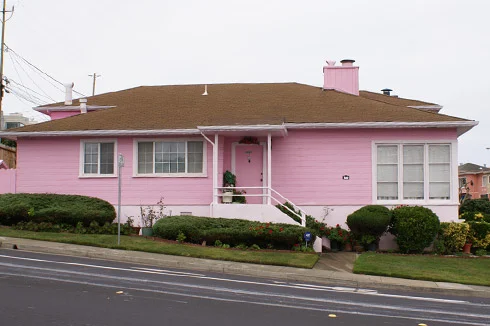California Mortgage Foreclosure Process
- A Notice of Default must be filed 90 days before foreclosure.
- Notice of Trustee's Sale must be given at least 20 days before the sale.
- A Trustee's Deed transfers property to winning bidder
Learn the California Mortgage Foreclosure Process
This article outlines the process for foreclosing on property in California.
Some states, such as California, allow the lender to use a deed of trust. Almost all purchase and refinance home loans in California use a deed of trust. American Banker offers the clearest definition of a deed of trust: "A three-party document conveying interest in property, almost always real estate, to a trustee. In many states, deeds of trust are used instead of mortgages. In those states, the trustee holds the deed in favor of the lender and then reconveys the title to the borrower when the loan is paid in full. (This is) sometimes called a trust deed."
Although most California homeowners refer to a loan secured against a house as a mortgage, the accurate terminology is a promissory note secured by a deed of trust. About a third of the US states are deed of trust states. Another third use traditional mortgages. The other third use either both or a variation on one or the other. The term mortgage is so ingrained in our vocabulary that almost everyone says "mortgage" when the legal instrument may be a deed of trust.
Even the terms mortgage and deed of trust do not fully capture the bundle of rights and documents in a mortgage or deed of trust.
Mortgage, Note, Deed, & Title
A mortgage consists of two documents: a promissory note (or bond); and the mortgage itself.
The note is the buyer’s personal promise to make the repayments. If there is a foreclosure against the property and the foreclosure sale does not yield enough to cover the outstanding mortgage debt, the note serves as the basis for a deficiency judgment against the borrower for the balance still due.
The mortgage itself is a document that gives the lender the right to have the property sold to repay the loan if the borrower defaults. Since the mortgage in effect gives the mortgagee (the lender) an interest in the land, the mortgage is recorded at the county clerk's office. In California, the trustee holds title to the property and is the party that that forecloses on the property if there is a default. If the borrower repays the loan in full, the trustee reconveys the property back to the borrower.
A deed is the document that passes the title from the grantor to the grantee. There are two basic types of deeds. A quitclaim deed passes whatever title or rights the grantor has in the property to the grantee. A warrantee deed contains promises made by the grantor about the title or rights conveyed. A deed must contain specific formalities, including the legal description of the property, and must be executed (signed in front of a notary public in most states), and delivered to the grantee.
Each state legislature created unique foreclosure and anti-deficiency laws. Follow the links just mentioned to learn the foreclosure rules relevant to you.
Private Foreclosure, Generally
In California, a lender can foreclose judicially or non-judicially. The most common method in California is non-judicial, and this article outlines the steps and timing for each. Foreclosure may occur when a borrower fails to make the agreed upon payments. A deed of trust allows the trustee to sell the property in a private sale if the borrower defaults. The private sale must occur in a commercially reasonable manner so as to bring the highest price possible. A private sale may occur as soon as 60 days following a default.
California Foreclosure Process
In California, a Notice of Default (NOD) is recorded in the county in which the property is located after a homeowner defaults on a mortgage. California law does not specify how long a lender must wait before it may file a NOD. However, it is customary for this to be 60 days after the date of delinquency. As of June 15, 2009, a NOD must be filed 180 days before foreclosure. (This used to be 90 days) (California Civil Code 2924 and 2923.52-2923.55)
A Notice of Trustee's Sale, which is usually an auction, must be given at least 20 days before the date of sale in one public place and posted on the property. (California Civil Code 2924 f) The auction can be postponed for up to a year. (CC 2924 g)
A Trustee's Deed transfers property to winning bidder. The winner is the lender if no bid higher than the lender's opening bid is received. (CC 2924 h)
Debt distressing you? The Bills.com Debt Coach is a no-cost online tool that will analyze your debts and show you the options available to resolve them and the costs and benefits of each.
As you can see, a California foreclosure can be completed in 200 to 260 days.
After a Foreclosure
As mentioned above, California law allows a lender to foreclose judicially or non-judicially. If the lender forecloses judicially, which would be unusual, the lender has 4 years to collect any allowed deficiency balance (Calif. C.C.P. § 337, and Flack v Boland 11 C2d 103, 77 P2d 1090 (1938)). If the foreclosure is non-judicial, the lender has 90 days to collect any allowed deficiency balance (Calif. C.C.P. § 580a and Sipe v McKenna 88 CA2d 1001 (1948) and Life Savings Bank v Wilhelm 84 CA 4th 174, 177 (2000).
California encourages distressed borrowers to pursue a short sale. Under Calif. C.C.P. § 580e, a lender may not collect a deficiency balances for all notes secured by mortgages or deeds of trust in a short sale situation.
To Learn More
To learn more, read the California Civil Code section mentioned above. Consult with a California lawyer who has experience in property law to receive precise answers to your California foreclosure questions.
